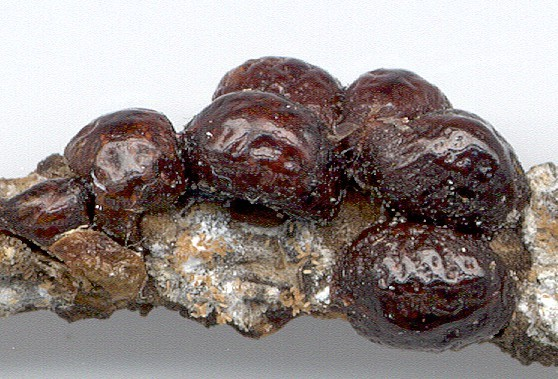Brown Elm Scale or European Fruit
 Scientific Name
Scientific Name
Lecanium parthenolecanium corni
Hosts
This species has been found on a wide variety of trees and shrubs and is a serious pest of fruit trees in some areas. In Oklahoma, it has been found on ash, mulberry, plum, pecan, maple, and occasionally on other trees, but it occurs chiefly as a pest of American elm.
Symptoms

Life Cycle
The eggs are laid beneath the body of the female in late April and early May and hatch into tiny lice-like nymphs in early and mid-May. The young, called crawlers, come out from beneath the scale covering and migrate to the leaves and small limbs. As they grow during the summer the bodies become opaque, and they attach along the veins of leaves and to limbs. Before the leaves fall from the trees in autumn, the scales migrate to the bark of the smaller branches where they spend the winter as second instar nymphs. With the beginning of sap flow in the spring, the scales start to feed. Adult males, if they are present in the population, emerge in the spring. They are small (1 ¼ mm long), brown, and gnat-like. They are incapable of feeding and live but a short time. There is one generation per year.
Description
The mature female is brown with a smooth, hemispherical-shaped body that is 1/8 to ¼ inch in diameter. During growth the body is soft and plastic, but at death becomes a hard, brown shell, fastened loosely to the bark, and serves as a covering for several hundred white eggs. Immature scales are light brown, smaller, and more flattened than mature females. This is a soft scale; therefore, the outer covering is part of the body of the scale.
Control
Please contact your local county extension office for current information.

